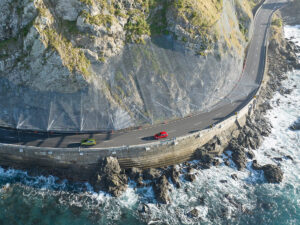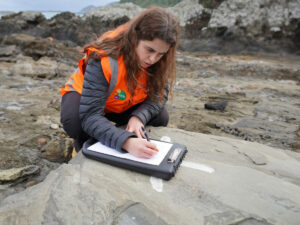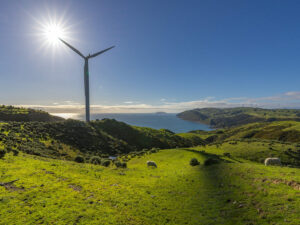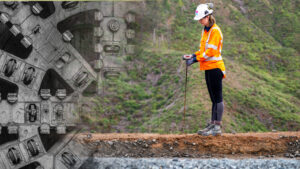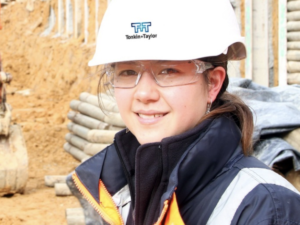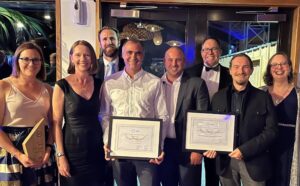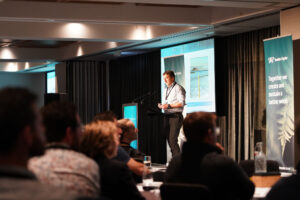
With weather, climate, and water extremes increasing in frequency and intensity across the globe, the impacts of climate change are evident and undeniable. Climate change brings exposure to multiple hazards, which themselves can experience compounding effects due to urbanisation, environmental degradation and population growth.
In a time where these phenomena will most likely increase in frequency and intensity, simple weather forecasting systems aren’t sufficient, and it will take impact-based warning systems to save lives and livelihoods.
Reading this might feel grim and startling.
But there is optimism in how we can react and respond to climate change – our multi-hazard early warning systems have made substantial improvements through improved technology, communication and community engagements. Our ability to prevent loss of life and catastrophe is better than ever.
23 March marks World Meteorological Day, a day that commemorates the creation of the World Meteorological Organization and highlights the importance of the role that people, and their behaviour play in protecting Earth’s atmosphere. The theme for 2022 is ‘Early Warning and Early Action’ – an emphasis on the crucial measures that can be taken before disaster strikes.
At T+T our purpose is to create and sustain a better world, and our initiatives in the disaster risk reduction space span not just across New Zealand but across the globe. An example of our recent work in the Pacific is the Coastal Inundation Forecasting Demonstration Project in Fiji – jointly coordinated by the World Meteorological Organization and the WMO’s Commission on Hydrology.
The project’s origins stem from flooding identified in a 2013 JCOMM report; the development of a forecasting system would prove crucial in strengthening flood mitigation efforts.
T+T’s role, alongside global and regional partners, was to integrate the forecasting system and GIS web viewer integrating the storm surge model, wave model data, swell inundation in the coral coast and catchment flooding and tide into land-based inundation around complex fringing reef environments.
In addition, T+T were also involved in forecasting system training, real-time support on pre-impact scenario development for anticipatory actions and disaster response, and rapid damage mapping to help the Fiji Meteorological Service and National Disaster Management Office use the system and operationalise for real events and pre-impact scenario developments for cyclone warnings.
Tonkin + Taylor’s Technical Director – DRR and Climate Resilience Dr Bapon Fakhruddin worked closely on the project providing system integration and operationalising the forecasting and early warning system. He shares with us insights into the design and unique ‘bottom-up’ community approach, how it’s performed and how it can further serve Fiji and the Pacific in the future.
Tell us about the beginnings of the project that lead to the creation of this new Early Warning System for Fiji. What was it like working on a global transdisciplinary team?
The Coastal Inundation Forecasting Demonstration Project (CIFDP) was jointly coordinated by the WMO-IOC Joint Technical Commission for Oceanography and Marine Meteorology (JCOMM) and the WMO’s Commission for Hydrology (CHy). The ground-breaking project developed and implemented a Multi-Hazard Early Warning System (MHEWS) that delivers an integrated approach to forecasting, monitoring and warning for coastal flooding, no matter what the cause – river or ocean.
The project was piloted in Bangladesh, Fiji, Indonesia and the Dominican Republic. We first successfully implemented this complex system in Bangladesh and have been working with the Fijian Government since 2012. Every year some 10-12 destructive tropical cyclones strike the Pacific, making Fiji one of the most vulnerable nations. We wanted to support this project by bringing a transdisciplinary team using state-of-the-art science to support the community. Engagement and data sharing are critical components of the CIFDP and coming to an agreement on common goals and how we can support each other was crucial.
What was challenging in creating this Early Warning system?
A challenge here is that with many island nations there’s a lack of fundamental inputs for modelling. In Fiji, limited observational infrastructure and a lack of historical data, alongside the complexities of the island network and reef environment, meant that the project needed a highly innovative approach. The team needed an outside-the-box approach and we saw global and regional data applied to the local context with the help of a significantly large number of disciplines.
Fiji comprises more than 330 islands, with only 110 that are permanently inhabited. The two major islands, Viti Levu and Vanua Levu account for 87 per cent of the population of almost 850,000. Approximately 75 per cent of the Fijian population live on Viti Levu’s coasts. Fiji’s location makes it highly susceptible to coastal inundation, resulting in an increased threat to the safety of families living in low-lying, highly populated coastal areas.
Risk management was also a great challenge to practitioners and policymakers in the areas of meteorology, hydrology, oceanography, emergency management, coastal planning. More recently public health with the COVID-19 pandemic added a new dimension to existing vulnerabilities.
What are some solutions and innovative features introduced with this system?
We need a multi-disciplinary, collaborative approach and atmospheric, coastal hydrological, oceanographic, and meteorological communities were brought together to develop the enhanced capabilities required to deliver accessible, understandable, and actionable warnings. This meant bringing together an unprecedented range of different expertise and data into one single platform. The technology developed here enabled the integration of these models to deliver results within 15 minutes, allowing forecasters and the Disaster Management Authorities to make reliable decisions and response plans to share publicly.
Alongside giving advanced warning of an impending cyclone of up to three to four days (in comparison to just 15 hours with the previous system) the adaption of fast computing provides accurate forecast revisions in under three hours. It’s also the world’s only system to incorporate reef environment simulations. Data accuracy and resolution here is world-leading – the system can report precisely where a storm will hit, how high the water will rise and how long flooding will last.
The forecast system developed runs on a desktop computer and produces rapid results. Alerts are broadcast 48 hours ahead of time and warnings are given with a 24-hour lead time. This allows the Fiji’ss Disaster Management Authority to plan their response and communicate quickly with communities. This early warning and early action is essential as together it can save lives, reduce vulnerability, and strengthen resilience.
Sustainability and cost management was very important, and the system was built using free, and existing tools and technology and can be run without the need for additional human resource, or prohibitive on-going costs.


Engagement with the Fijian community was key in ensuring that the system met the needs of the Fijian people. Could you share more about how the system was designed with the community in mind?
Early Warning Systems have in the past been typically designed from the top-down. This however results in flawed systems that don’t meet the cultural and contextual needs of end-user communities. In Fiji, a ‘bottom-up’ approach was taken, and the project team immersed themselves in the Fijian communities most at risk from coastal inundation to identify their fundamental needs. Deeply understanding the weaknesses and strengths of the nation’s communities was key in developing this system. We found that communities were always looking for the following fundamental information such as:
- What is coming?
- How long will it stay?
- What will be the extent of the impact?
- What do I need to do to keep safe? (I.e., do I need to evacuate?)
- What will be the damage to my livelihood? (I.e., home, land, crops)
The system was designed with those community needs at the forefront and could meet these fundamental needs, and the NDMO are well placed to help their communities prepare to respond to a cyclone quickly, and appropriately.
How has this Early Warning System performed since implementation?
In April 2020, Category 5 severe tropical Cyclone Harold hit. Forecasting was used to determine the storm surge heights, recorded at approximately 6.5 metres, and estimations indicated that it was probably up to 8.5 meters in less sheltered areas. This enabled the accurate recording of wave size and formed the basis of successful evacuation warnings to vulnerable communities. Just one life was lost.
Later in December of 2020, Cyclone Yasa, also a Category 5 event, struck Fiji. Damages were set at $US246.7 million and four people died. With the effective early warnings and a well-informed population, the combined death toll is in stark contrast to the tragic loss of 44 lives during Cyclone Winston in 2016. We provided hazard exposure and vulnerability maps every six hours to ensure safe evacuation, disaster response planning and evacuation shelter risk status.
Climate change and rapid changes in weather are on-going and so to are the efforts in keeping an effective early warning system – what do you see looking forward?
As the world goes through unprecedented change due to the COVID-19 pandemic, renewed cooperation among Pacific Island countries will be extremely important. Ongoing development will need inclusive community-based approaches as well as long-term cooperation between governments, international development partners and regional organisations.
This system has also provided a great model for application to other small island environments in the South Pacific. The Early Warning System here has demonstrated the value of designing with flexibility to account for inundation from multiple sources, and it also shows what we can achieve via -transdisciplinary collaboration at an international scale.
There is potential to enhance this early warning platform in the future and to extend it to other South Pacific island nations, and even consider extension to include other coastal flooding sources such as tsunamis. This modelling and design can also be further developed to inform decision-making processes for sectors including agriculture and tourism. With additional resources and advances, it can provide even more accurate information.



